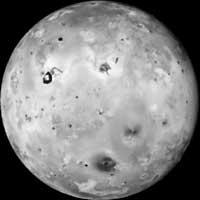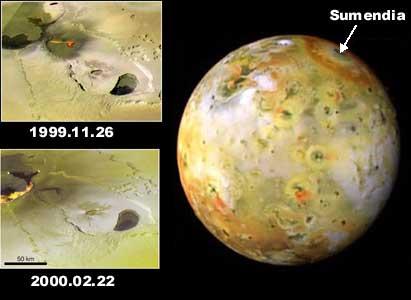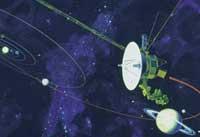The long journey of Galileo ends
2002/04/01 Carton Virto, Eider - Elhuyar Zientzia Iturria: Elhuyar aldizkaria
The project managers announced in January that next year will be that of Galileo when it will disintegrate against Jupiter as a fireball. When it comes to greeting, a review of the long journey. How does Galileo work?
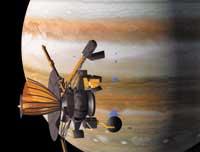
In the 1970s, when the Pioneer and Voyager ships passed alongside Jupiter, they received interesting but limited data as they could not stop. Then, at NASA they proposed to launch a project to visit Jupiter and its satellites. It was a matter of studying the atmosphere of Jupiter, of checking if the satellite Io had active volcanoes, of studying closely the European icy surface...
Journey of Galileo
Galileo was launched in 1989 by the space shuttle Atlantis. The spacecraft did not have enough energy to direct it to Jupiter and used the momentum of Earth and the gravitational field of Venus. Once he turned around Venus and twice around the Earth, he went to Jupiter. The small amounts of plutonium used to carry out these maneuvers caused the rejection of many people.
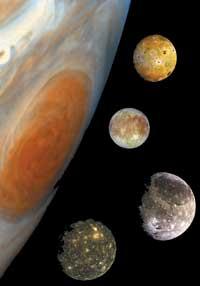
Surrounding Venus and Earth, he tested the instruments and made the first photographs. The first mistakes also occurred then. The large Galileo antenna was not opened as planned and the entire system had to be reprogrammed to receive all the information through the small antenna.
Galileo's discoveries began before reaching Jupiter. Crossing the asteroid belt between Mars and Jupiter, he discovered the asteroid Gaspra and the small Dactyl satellite of the asteroid Ida. And in 1994 he saw before anyone how the comet Shoemaker Levy was reduced against Jupiter. Astronomers on Earth wait for Jupiter to turn to see the areas of shock.
After a six-year journey, Galileo arrived at the Jupiter system in July 1995, when he released the probe he was bound. Four months after Jupiter's gravitational zone captured the probe, it entered the gaseous giant's atmosphere. Before evaporating, he traveled 135 kilometers of the atmosphere (upper atmosphere of Jupiter) and was receiving data for 59 minutes.
Surprises in the atmosphere of Jupiter
Random deliberately caused the probe to fall into the area known as ‘hot spot’ and scientists to collect data they did not expect, by detecting waters and temperatures much lower than expected. Later, when Galileo made global measurements, they discovered that the atmosphere of Jupiter interspersed wet and dry regions that fell into one of the driest probes.
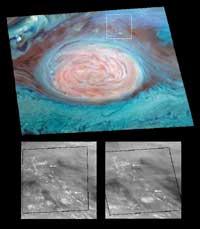
Thanks to the data collected by the probe and Galileo, the researchers were able to know some details of the atmosphere of Jupiter. For example, it is divided into three layers: on the outside there are ice cream ammonia clouds, in the center ammonium and hydrogen sulfide crystals and, on the bottom, ice water and perhaps also liquid water.
As for the storms, it was possible to measure the speed of the provoked winds –500 km/h– and determine the causes that lead them. It seems to be due to the increasing vertical circulation of water and the downward movement of the dry wind. And they are super violent. Jupiter's red spot has long been known, but Galileo has found rivals: two white spots that function as a single system. Together they form a storm equal to the diameter of the Earth.
Satellite discovery and discovery
Being a gaseous giant, Jupiter does not have a solid surface like the Earth, but its temperature and pressure inside are very high and, apparently, can have a nucleus of ‘metallic liquid hydrogen’. Hydrogen in this situation, instead of having a gas moving freely, is a special matrix capable of producing huge electric currents.
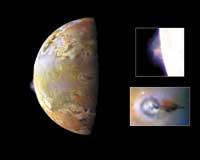
Jupiter has a very powerful magnetic field and this may be due to its special core. Jupiter's magnetic field extends to 975 million kilometers of the planet, beyond the orbit of Saturn, and has served to investigate its satellites. Galileo has mainly studied the satellites Io, Europe, Ganymede and Callisto.
The magnetic field of a body is the reflection of its interior. To understand the internal structure of the satellites, Galileo has analyzed the interaction between Jupiter's magnetic field and satellites. Depending on what crosses the magnetic field will undergo some change. Thus it has been known that Ganymede has its own magnetic field, that there may be liquid water inside Europe, and perhaps also inside Callisto.
By measuring the polarization of light the composition and structure of the surface of the satellites has been studied and the surface temperature has been known by measuring the infrared light emitting. To investigate the interior, in addition to the changes in the magnetic field, they have taken advantage of the Doppler effect. Every time Galileo passed by Jupiter or a satellite, the thrust of gravity made it emerge and on Earth, due to the Doppler effect, the frequency change of the radio signal was measured. Since the thrust of gravity depends on the amount of rock the satellite has, the change of the radio signal allows to know the structure of the satellites.
Repeated mission

Galileo's mission had to last two years, it had to finish its work on December 7, 1997, but due to the proper functioning of the spacecraft and the desire to receive more data, it was agreed to extend the mission for two years. During these two years he closely analyzed European ice, Io volcanoes and Jupiter storms. It was then discovered that under the ice surface of Europe there may be an ocean of salt water.
These discoveries in Europe are the main cause of the destruction of Galileo. NASA is preparing a mission that will study Europe to check if there is liquid water and if it can be alive, but before taking off the Galileo spacecraft was not sterilized, so they do not want to hit Europe.
The accidental impact of spacecraft against the European Moon threatens to produce biological contamination on this satellite, which could crumble the NASA project. The fuel needed to put the Galileo antenna facing the Earth is running out and they want to destroy it under control.
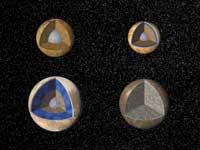
At the end of the second mission, Galileo approached the satellite Io, the satellite closest to Jupiter. As they feared that Jupiter's violent radiation would destroy the spacecraft's computers, they left it for the end of Io, but radiation was overcome and active volcanoes were found.
Some are warmer than those on Earth, which makes it suspect that silicates rich in magnesium are poured from the surface of Io. The volcanoes of Luna Io were discovered in 1979, and since then they have only surprised. Galileo has approached Io more than ever, detecting data that until now could not be seen.
Thus, NASA decided to expand its mission until 2001 to collect more data from the Io and Europe satellites and investigate how radiation affects a spacecraft near Jupiter. Finally, in September 2003 it enters and is destroyed in the atmosphere of Jupiter.
Last tasks
Before retiring, NASA astronomers have led you to a new visit to the moon volcanoes to take the latest photos. With this last visit they hope to see how some volcanoes have changed in recent years.
In November 2002, by extinction, Jupiter is very close and passes about 500 kilometers from the small satellite Amaltea, inside Jupiter. He will then analyze the mass and density of the Moon, which so far, according to studies, is ten times smaller than Io. Astronomers also expect Galileo to give the key to explaining Jupiter's violent storms and Io's volcanoes before their destruction.
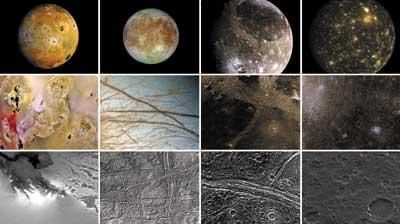
Galileo is a spaceship with double spin. Part of the boat rotates at three revolutions per minute, while six instruments receive data uninterruptedly. The other body is fixed and has four instruments to orient the spacecraft. Galileo works in orbits. Each orbit in the form of an oval lasts two months and, each time, passes from Jupiter at different distances. Thus, you can investigate different regions of Jupiter's magnetic field. Galileo was designed to pass orbits near the large satellites of Jupiter to study Io, Europe, Ganymede and Callisto. Although the initial mission was 10 orbits, Galileo has finally completed 33 tours. The data collected by Galileo is collected on the packaging recorder. When it approaches satellites, it receives data and is then transmitted to Earth through the small antenna until the orbit is completed. Parallel measurements of the magnetosphere of Jupiter are made. NASA researchers communicate with the spacecraft through the large antennas in Goldoston, California, Madrid and Canada. With three antennas it is possible never to interrupt the communication, since as the Earth turns the signal passes from one antenna to another. This system is known as Deep Space Network. |

Gai honi buruzko eduki gehiago
Elhuyarrek garatutako teknologia




